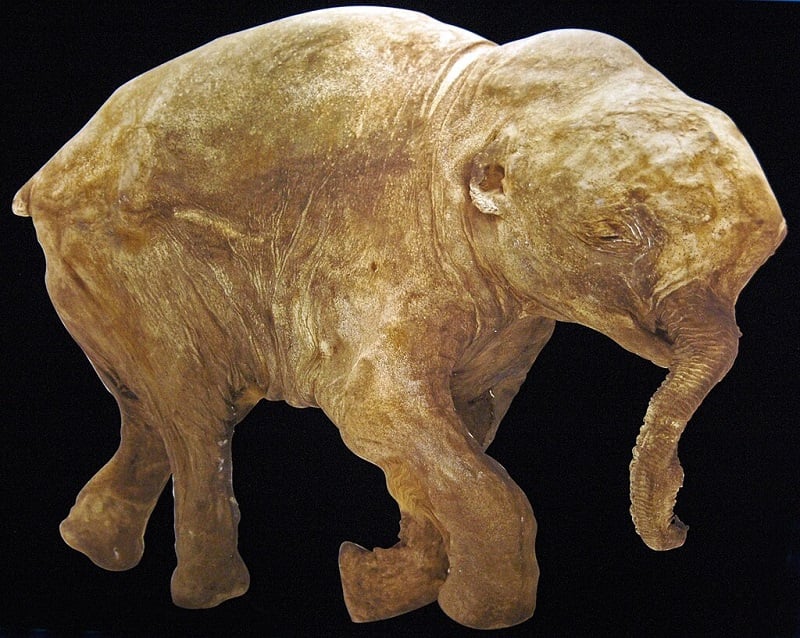
Mammoth mummies in Siberia refer to the preserved remains of woolly mammoths, an extinct species of elephant that roamed the Earth during the Pleistocene epoch.
Siberia is well-known for its vast, frozen tundra, and the extreme cold temperatures have played a significant role in preserving the remains of these ancient creatures.
The preservation of mammoth mummies is often due to the process of natural freezing. When these animals died in the cold regions of Siberia, their bodies were quickly covered with snow and ice, protecting them from decomposition and scavengers.
Over thousands of years, the frozen conditions kept the bodies intact, and in some cases, the remains have been incredibly well-preserved.
Horses, bison, rhinos, and more have been found— but the most famous mummies belong to woolly mammoths, specifically juvenile mammoths.
Lyuba and Dima are respectively the second and third best-preserved mammoth mummies ever discovered. They both hail from the permafrost deposits of Northern Siberia.
Meet Lyuba and Dima, two juvenile woolly mammoth mummies from Siberia.
Credit Archeology Adventures pic.twitter.com/9kDG0cXQud
— Domenico (@AvatarDomy) July 19, 2023
Discovery of mammoth mummies
Lyuba was discovered by reindeer herders, washed down a river, by in 2007. She was about 6-12 months old when she perished 41,800 years ago in what is now northwest Siberia.
Though her skeleton is somewhat deformed, this little mammoth is in near-perfect condition with many of her organs preserved. She was healthy when she died and experienced a quick death.
Fine-grained sediment found in her breathing passageways paints a picture of a small mammoth that accidentally inhaled mud and suffocated. Her body was deposited in a lake environment, decay was slowed, and the body became frozen.
Preserved in the Shemanovskiy Museum and Exhibition Center in Russia, it is by far the best-preserved mammoth mummy.
Dima was discovered at a gold mining operation in 1977. Estimated to have died around 41,000 years ago, this mammoth was about 8 months old when he perished in what is now northeastern Siberia.
Though his back end was scraped by the blade of the excavation machine, Dima is nearly complete. He even still has some of his hair!
Unfortunately, evidence points to Dima not having as quick of an end as Lyuba. Though his exact mode of death has been debated, it can be seen that Dima starved and became infested by parasites before finally choking on sediment. The body became submerged in water and quickly froze.
Best preserved mammoth

However, the best preserved woolly mammoth carcass ever found is Yuka. It was discovered by local Siberian tusk hunters in August 2010 and is displayed in Moscow.
Yuka is a juvenile female natural mummy found near and named after the village of Yukagir, whose local people discovered it. This mammoth mummy was found on an overhanging ledge about 4 meters (13 ft) above the beach level in a low wave-cut bluff that was about 5 meters (16 ft) high.
An analysis of the teeth and tusks determined Yuka to be approximately 6–8 years old when it died. Although it is presumed that this mammoth had most likely been attacked by lions or other predators, evidence that the predators had killed the mammoth was not found.
Related: Woolly Mammoths to be Resurrected Within Next Decade, Scientists Say
See all the latest news from Greece and the world at Greekreporter.com. Contact our newsroom to report an update or send your story, photos and videos. Follow GR on Google News and subscribe here to our daily email!



